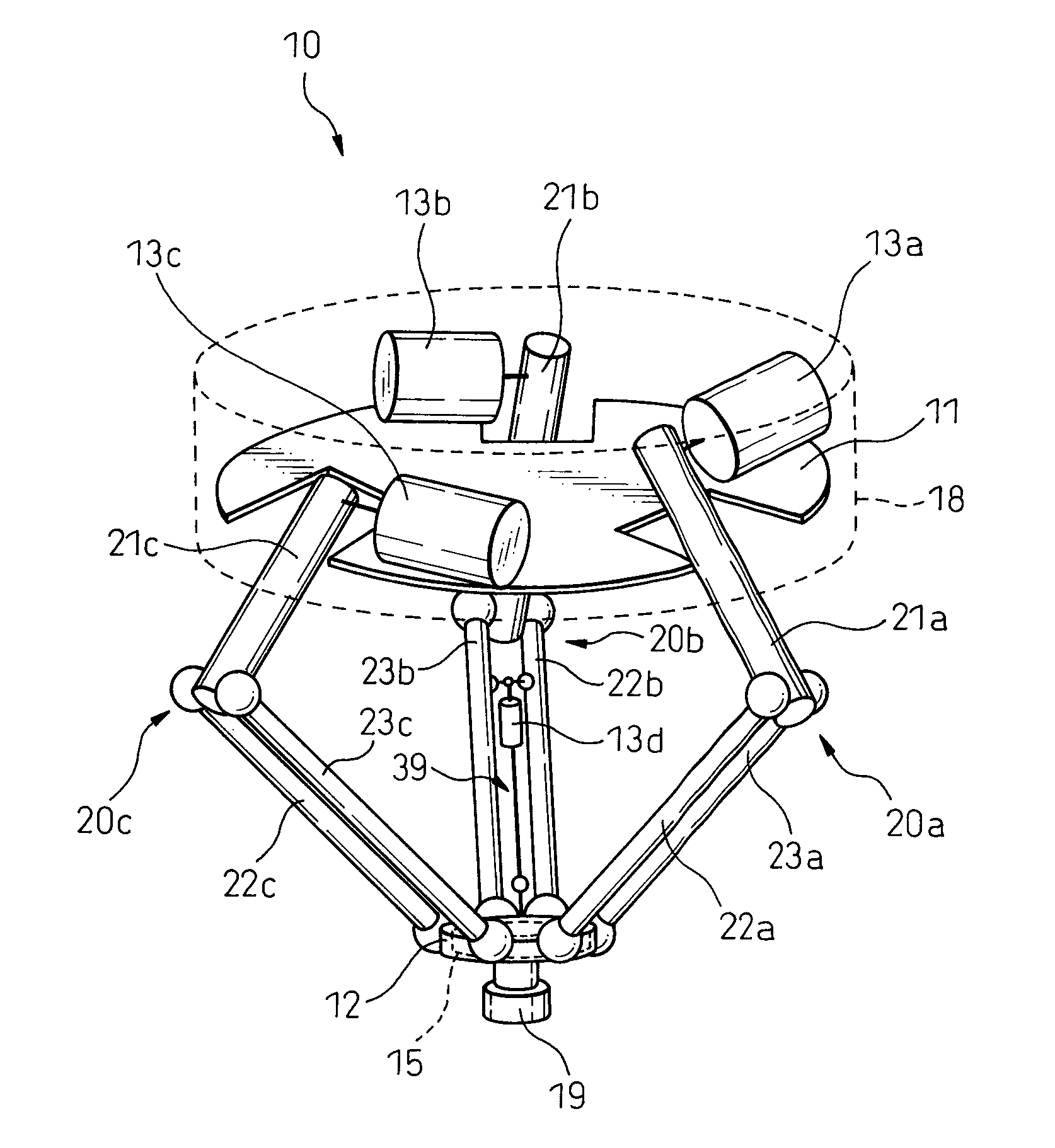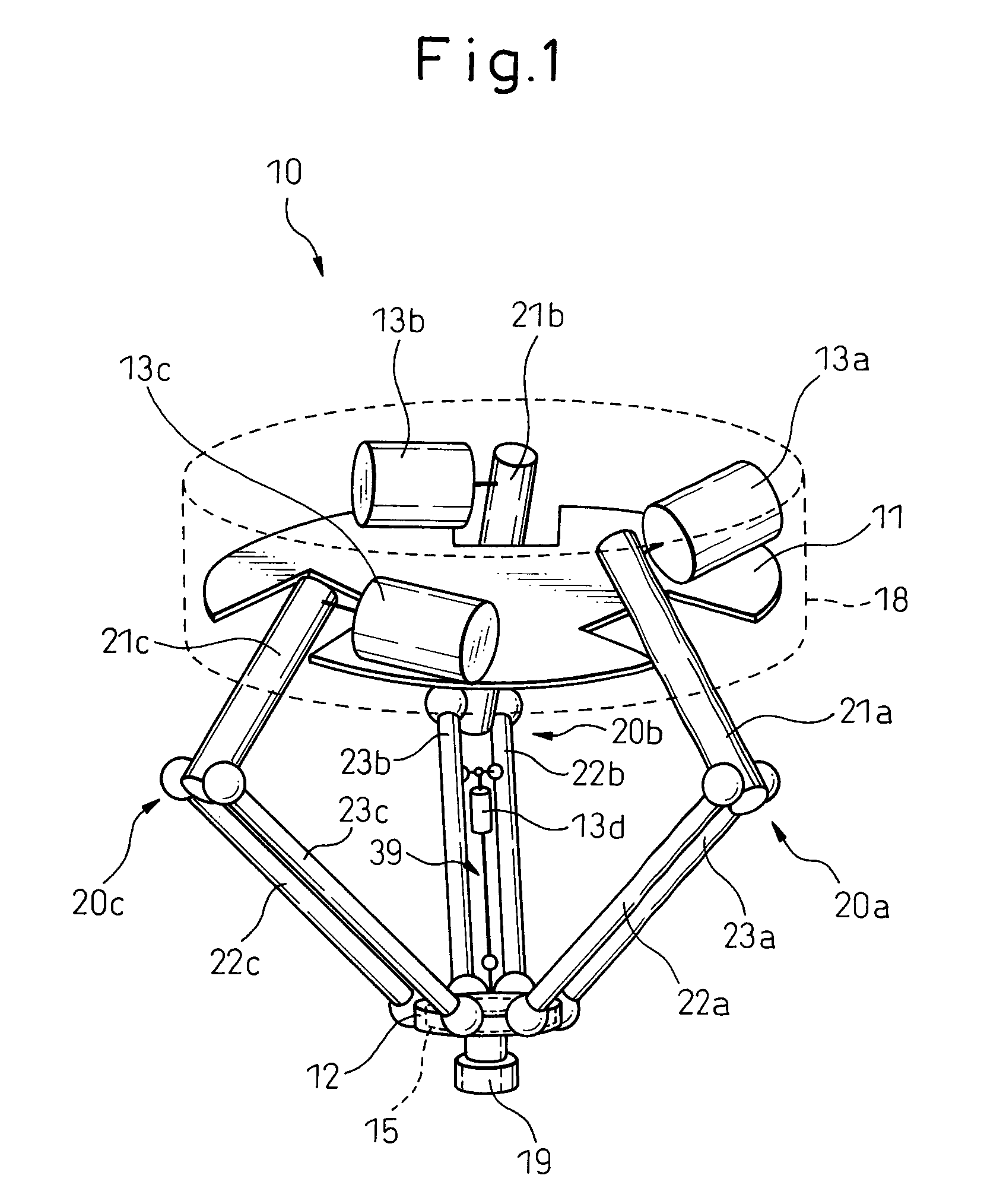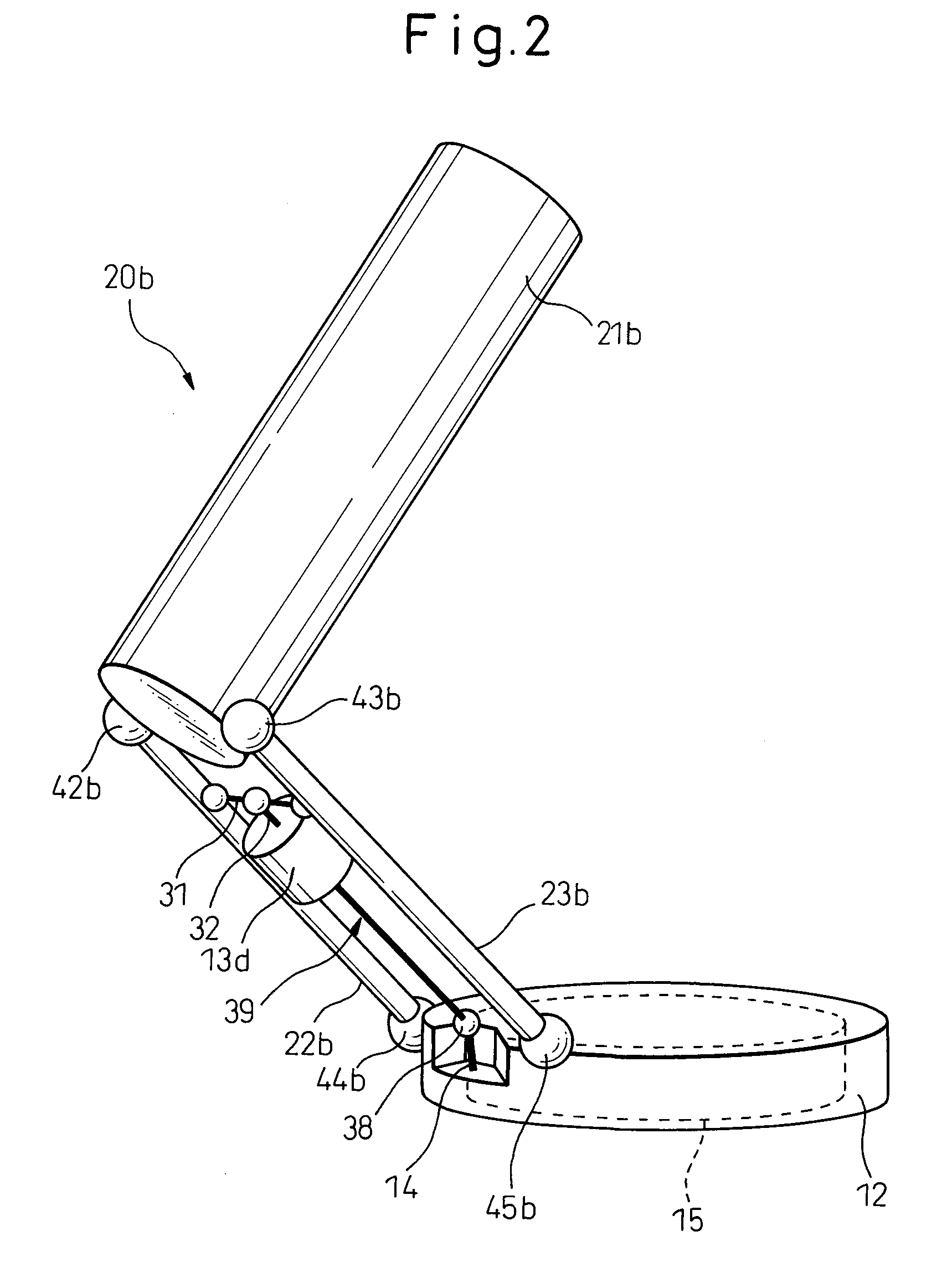Parallel link robot
a robot and parallel link technology, applied in the direction of mechanical control devices, process and machine control, instruments, etc., can solve the problems of decreasing the number of reciprocating operations per unit time, affecting the processing ability, and remarkably limited acceleration/deceleration performance of the moving plate 120/b>
- Summary
- Abstract
- Description
- Claims
- Application Information
AI Technical Summary
Benefits of technology
Problems solved by technology
Method used
Image
Examples
Embodiment Construction
[0042]Below, embodiments of the present invention will be explained with reference to the attached drawings. In the following drawings, similar members are assigned similar reference numerals. To facilitate understanding, these drawings are suitably changed in scale.
[0043]FIG. 1 is a perspective view of a parallel link robot in a typical embodiment based on the present invention. In FIG. 1, the parallel link robot 10 mainly includes a base 11 contained in a housing 18, a movable plate 12, and three links 20a to 20c coupling the base11 and movable plate 12. At the bottom surface of the movable plate 12, a mounting member 19 is provided. A not shown end effector is attached to the mounting member 19.
[0044]FIG. 2 is a partial perspective view of the parallel link robot shown in FIG. 1. As shown in FIG. 2, the link 20b is comprised of a drive link 21b and two driven links 22b, 23b extending from the movable plate 12. These are coupled together by spherical bearings 42b, 43b. Further, th...
PUM
 Login to View More
Login to View More Abstract
Description
Claims
Application Information
 Login to View More
Login to View More - R&D
- Intellectual Property
- Life Sciences
- Materials
- Tech Scout
- Unparalleled Data Quality
- Higher Quality Content
- 60% Fewer Hallucinations
Browse by: Latest US Patents, China's latest patents, Technical Efficacy Thesaurus, Application Domain, Technology Topic, Popular Technical Reports.
© 2025 PatSnap. All rights reserved.Legal|Privacy policy|Modern Slavery Act Transparency Statement|Sitemap|About US| Contact US: help@patsnap.com



